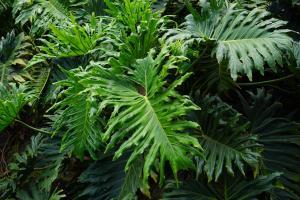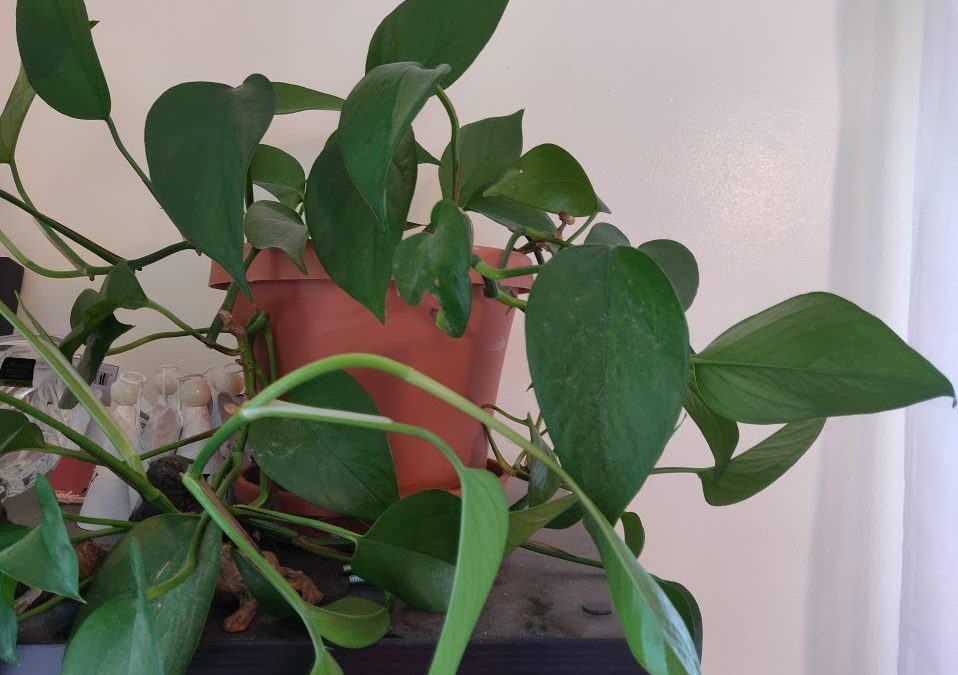Continuing with discussions about house plants: my first plant as a new high school graduate was a start off of my grandmother’s philodendron. I remember telling my mom that I needed something nearly indestructible, something I could forget to water once in a while. This was all that and more.
My philodendron has been knocked off of the refrigerator, left for weeks without watering (and in reverse, way over watered by one of my ‘helpful’ roommates) and been stuck in the back of my parents’ van in 100+ degree weather for a week and still lives. I’m sure most people recognize the photo above, and the majority of them will even know what it is, but did you realize the photo below is also a philodendron?

Image by Hans at Pixabay.
It is estimated there are over 400 varieties of this family, and one organization estimates that number to be more in the 900 range. In the continental U.S. most plants must be kept indoors, but in the warmest areas of the country, and central America, as well as the Indies, these plants are grown outside.
Usually grown for it’s lovely foliage, in the right conditions, many varieties will also put out calla lily-type flowers as well in pink, red, purple or pale green. Leaves should be washed periodically wit a light soap solution or with a gentle insecticide to clean pores and discourage insects. These plants thrive in room temperatures of 60-75 degrees and need very little light. In fact, they should be kept from direct light for most of the year, wit the coldest parts of winter as the exception. I had mine on the floor of my car when I was moving once and the leaves exposed to direct, hot sunlight of mid summer took less than 15 minutes to die back.
This member of the Araceae family likes high humidity when kept in green houses, with humidity slightly less important in the cooler winter temperatures. Also, plants will benefit from a diluted fertilizer every couple of weeks.
To propagate, stems with at least two joints can be planted in a loose potting soil and kept in a warm spot (either with bottom heat, or under an inverted bell jar), starting with a three inch pot. Another option, especially with trailing varieties, is to place the freshly cut stem in a jar of water and kept out of direct sunlight for four to eight weeks while it grows roots. Cuttings started in water should also have a couple of small chunks of charcoal added to the water.
If you happen to come across a variety that sets seed, the best way to start them in in damp sphagnum moss, then transplant them into a pot when they are large enough to handle easily. Seeds should be removed from the fleshy covering they grow in and planted immediately without allowing them to dry out first.


In college I had a plant named Fred. I loved Fred and inherited him when I got married and moved out of my apartment from the other roommates. I had fred for many years until we moved out of our home in SLC and ended up as homeless people while waiting for our house to be built where we live now. Poor Fred . . . during that time I lost track of what happened to him,